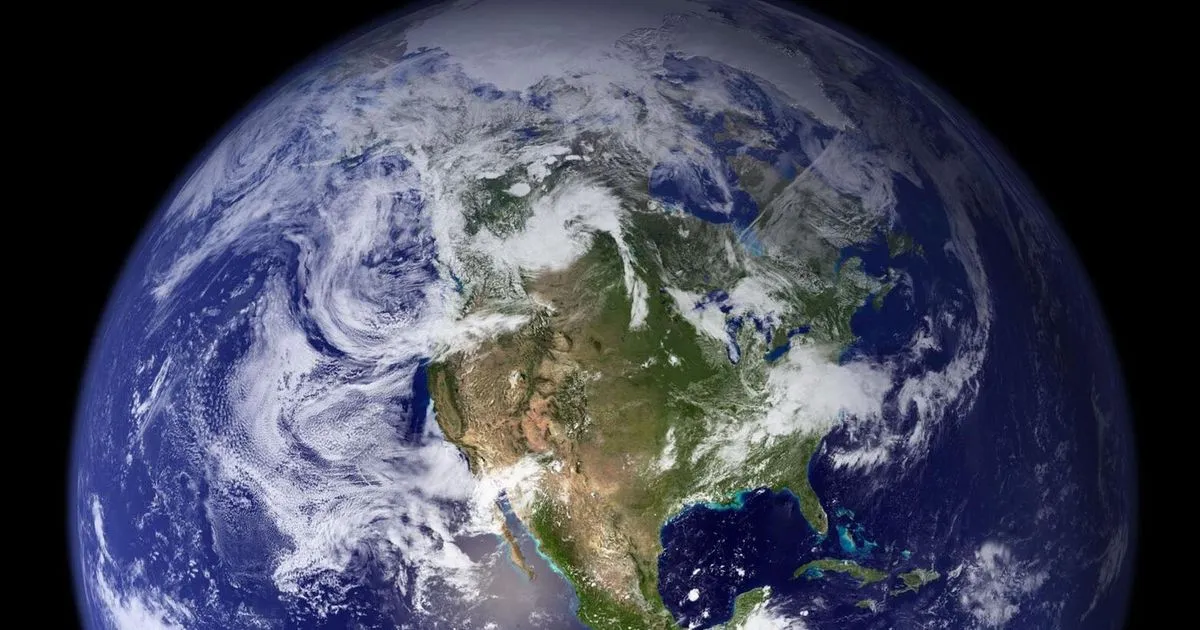
The Earth stands as the only known habitable world in our solar system. However, it is not entirely alone, as it frequently receives visitors from space, predominantly in the form of harmless asteroids. Among these cosmic travelers, some asteroids opt to linger in orbit around our planet, thereby gaining the status of a quasi-moon. The latest addition to this group is an asteroid designated as 2025 PN7, which was discovered during the summer months.
Asteroid 2025 PN7 possesses an orbit closely resembling that of Earth around the sun, akin to a car traveling in the same highway lane as our planet. This unique orbital relationship classifies it as a quasi-moon. Among the few known quasi-moons, 2025 PN7 is believed to be the smallest, measuring approximately 52 feet in length—shorter than a standard bowling lane.
Many asteroids that come near Earth originate from the main asteroid belt located between Mars and Jupiter, while others may be fragments of the moon ejected during significant meteorite impacts. According to Carlos de la Fuente Marcos, an astronomer from the Complutense University of Madrid, there are currently "no real hints about its origins, only speculations." De la Fuente Marcos is also a co-author of a study published in the journal Research Notes of the American Astronomical Society regarding the discovery of 2025 PN7.
2025 PN7 is classified as a temporary visitor, part of a sparse population of space rocks that briefly orbit, trail, or lead Earth as it orbits the sun. Like its fellow asteroids, 2025 PN7 will eventually depart the Earth’s vicinity, likely in about 60 years. Unlike mini-moons, which orbit the Earth for only a few months, quasi-moons maintain a more stable orbit around the sun and can accompany Earth for hundreds or even thousands of years.
An example of a transient mini-moon is 2024 PT5, which orbited Earth for a short time before departing in late November. In contrast, quasi-moons like 2025 PN7 are considered valuable targets for planetary science missions due to their prolonged proximity to Earth.
Another well-known quasi-moon, Kamoʻoalewa, is the target of the upcoming Tianwen-2 mission, which aims to collect geological samples for study on Earth. The discovery of 2025 PN7 occurred on August 2 at the Pan-STARRS observatory in Hawaii. Researchers later found its orbital path in archival images from previous years, revealing that it shifted into its quasi-moon orbit back in 1957, coincidentally just as the world witnessed the launch of Sputnik 1, the first artificial satellite.
According to astronomers, in August 1980, 2025 PN7 approached Earth to within 2.5 million miles—approximately ten times the distance from Earth to the moon. At its farthest point, this quasi-moon may be situated around 11 million miles away. Simulations suggest that 2025 PN7 will spend about 126 years in proximity to Earth, losing its quasi-moon status in 2083.
While 2025 PN7 currently holds the title of the smallest known quasi-moon, this designation is not yet confirmed. Scientists estimate an asteroid's size based on the amount of sunlight its surface reflects, but 2025 PN7 has proven challenging to observe. De la Fuente Marcos noted, "We cannot really tell its true size," suggesting it could potentially be as large as 160 feet. Future observations will help determine if it retains its status as the tiniest quasi-moon.
The presence of near-Earth asteroids like 2025 PN7 is significant to astronomers, as they provide valuable insights into the evolution of the inner solar system. Federica Spoto, an asteroid dynamics researcher at the Harvard-Smithsonian Center for Astrophysics, expressed excitement about the capture of these celestial bodies. “It is even cooler when they get captured and they stay close to the Earth for quite some time,” she remarked, highlighting the importance of such discoveries in understanding our cosmic neighborhood.